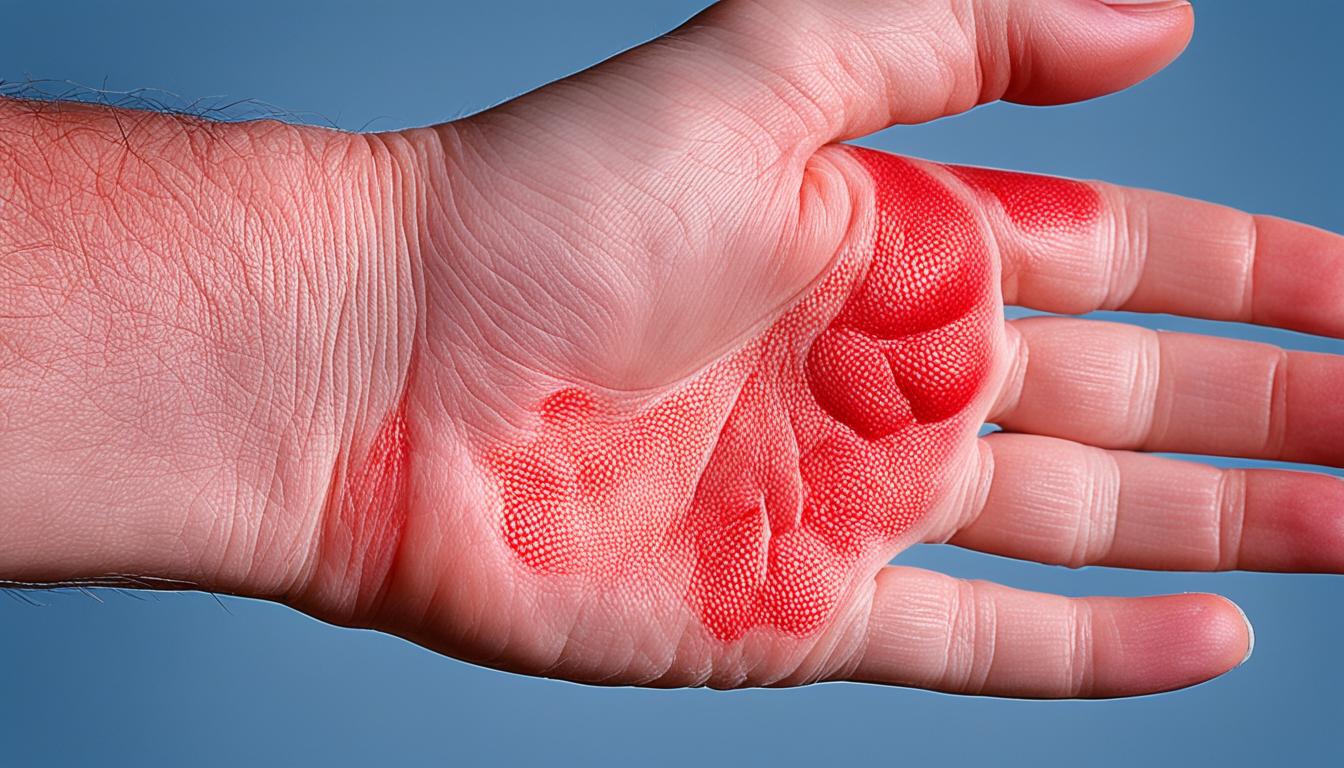Nickel allergy leads to allergic contact dermatitis. This shows as eczema on skin touching nickel. The immune system mistakes nickel as a threat, causing allergic reactions. Symptoms include itching, a rash, and red skin. If you notice these after touching nickel, see a doctor right away.
Diagnosis often uses skin tests. A bit of nickel is placed on the skin to see if it reacts. This test helps doctors figure out the best way to treat you.
Treating nickel allergy focuses on symptom relief and lowering nickel exposure. Creams can help with redness and itchiness. It’s crucial to avoid nickel items like jewelry and coins. Some might also need to cut out certain nickel-rich foods from their diet.
Researchers are looking into using stem cell therapy to treat nickel allergy. It’s a new area, but it could offer help in the future. Stem cells might repair the immune system. However, we need more studies to know for sure if it’s safe and effective.
Key Takeaways:
- Nickel allergy is a common cause of allergic contact dermatitis.
- Common symptoms include itching, blistering rash, and redness of the skin.
- Diagnosis is typically done through skin testing methods.
- Treatment involves managing symptoms, limiting exposure to nickel, and avoiding contact with nickel-containing objects.
- Stem cell therapy is being researched as a potential treatment option for nickel allergy.
What is Nickel Allergy? Causes, Symptoms, and Diagnosis
Nickel is a silvery-white metal found in things like jewelry and coins. When your body mistakenly thinks nickel is harmful, it reacts with an allergy. This mix-up is likely due to both genes and the environment.
Symptoms of Nickel Allergy
If you’re allergic to nickel, touching it or its items can cause several reactions. It starts with itching at the contact site and can spread. Your skin may also turn red, swell, or form blisters. In bad cases, you can get painful blisters filled with fluid.
Diagnosis of Nickel Allergy
Doctors use your health history and tests to diagnose a nickel allergy. A common test is a patch test. They put a little nickel on your skin and cover it. After 48 hours, they check if you had a reaction. This test shows which substances you’re allergic to.
Finding a nickel allergy isn’t always easy because its signs look like other skin problems. Getting help from a skin doctor or allergist is key to find out for sure.
If nickel allergy is confirmed, avoiding nickel is crucial. Stay away from items like certain jewelry and electronics. Choose products without nickel and wear jewelry that’s made for people with allergies. This can keep your reactions at bay.
Learn about what causes nickel allergies and how to handle them. This knowledge, along with the right diagnosis and care, can make living with a nickel allergy easier.
Nickel Allergy Treatment and Prevention
Unfortunately, a cure for nickel allergy is not available. But, there are ways to handle its symptoms and avoid nickel. Using creams with corticosteroids can ease inflammation and itching. This gives relief to those affected.
To manage nickel allergy, prevention is key. It’s vital to stay away from nickel in jewelry and metal items. Also, check product labels for nickel, including in cosmetics. It’s best to avoid these to prevent reactions.
A nickel-free diet is helpful for those with this allergy. Avoid foods like chocolate and nuts, known to have a lot of nickel. Choosing foods low in nickel makes a big difference in preventing reactions.
There’s ongoing research on using stem cell therapy for nickel allergy. But, we don’t know yet how safe and effective it is. So, for now, managing symptoms and avoiding nickel are the best approaches.

